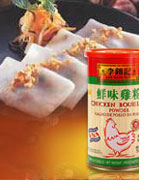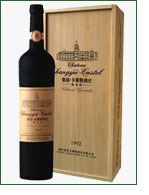Market insights: Examples from our consumer practice
China: The Market for Condiments, Herbs, Sauces, Spices & Spreads

China is changing rapidly and so are its tastes. As a consumer society emerges, so new products are appearing with increasing regularity. Condiments, sauces, spreads, herbs & spices are among them. Rising average annual incomes, greater ownership of better home cooking facilities, increased ex-posure to western and international cuisines and a greater array of goods in the supermarket are all combining to increase sales of condiments, sauces, spreads, herbs & spices in China.
Historically, condiments, sauces, spreads, herbs & spices sales have been widely used in Chinese cuisine, and with growing consumer spending power, so the ability to buy more of these products, and a greater variety, has led to a rapid expansion in the number and type of products available.
The arrival of the fast-food chains, western-style supermarkets, greater awareness of dried foods and the emergence of a generation both willing and able to try new products has meant that the market for dried foods has made great strides in China.
The increasingly busy lifestyles of urban Chinese in particular, has led to an increased demand for convenience foods, such as prepared cooking sauces. Also, and increasing number of people are finding it difficult to go shopping for food each day, and so more people are now buying foods for use another day, leading to an increased acceptance of prepared sauce and condiment use, particularly dried cooking ingredients that are easy to store.
China: The Market for Wine

China claims over 160,000 acres of vines nationwide, but much is in remote areas, such as those in Tibet near Kazakhstan, where Silk Road traders brought seeds centuries ago. There is also a small native grape (Vitus thunbergii) that grows wild north of Shanghai. And Russian visitors brought plantings of Muscat and Ratsiteli to China in the early twentieth century.
Although having been started at the beginning of the 20th century, the wine industry in China has only recently begun to develop into a significant market. Chinese consumers have tended to stick to what they know, being beer and grain spirits - drinks that offer a higher alcohol level per unit than wine.
However, wines have attained consumer acceptance, not least due to Chinese politburo member Li Peng, who decreed that state banquets should be lubricated with wine instead of spirits in 1996. The influence of western eating and drinking habits have been key in this, as have rising average incomes in China. Indeed, wine is now becoming the fashionable drink for the wealthy younger generations in China's cities, and the "badge" drink of China's wealthiest élite.
The value of the market has more than doubled over the last five years, and has become much more sophisticated. Not only are there more foreign wine imports available in restaurants and in the shops, but the number, variety and quality of domestic wines has also increased. This has served the market by providing local consumers with a greater array of cheaper products to try.
However, the domestic market has moved on, and domestic wines are now reaching a level of quality that they can compete on price with imported wines, and even look to developing an export market. However, the domestic market is where most Chinese wineries are looking to develop their sales. With about 600 million young Chinese, all exploring new types of alcoholic drinks, the potential market for sales of wine in the future is great.
So much for the future - at present wine consumption in China is still in its preliminary stages as is international cooperation in the industry.

